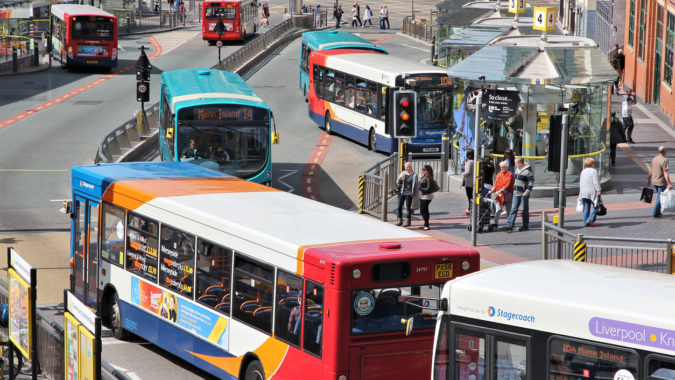Much has been written about loneliness and the elderly, but less of how Millennials are Gen Z are grappling with this from a much earlier age, particularly as digital experiences replace physical interaction. How can infrastructure work harder for us and combat loneliness through good design?
Loneliness is often understood as physical isolation, but it does not just embody being alone. It is a perceived social isolation that is defined by researchers as feeling lonely more than once a week. A recent YouGov poll reported that 75% Gen Z say they have felt lonely, compared to 37% of people aged 55 and over. This is significant as loneliness can have a huge impact on both our mental and physical health. Indeed, the European Society of Cardiology reports that loneliness is bad for the heart and a strong predictor of premature death. Loneliness is a growing problem directly impacting on the quality of life of a vast proportion of the population. Are there opportunities for infrastructure to change this?
One way in which infrastructure can improve wellbeing is in recognising opportunities to tackle loneliness through design. The National Infrastructure Commission’s Design Group recently published the UK’s first ever Design Principles for National Infrastructure to be used on all nationally important infrastructure projects. The principles – Climate, People, Places, Value – reflect the wide effects and benefits that national infrastructure has, and the importance that design plays in improving quality of life. Infrastructure is a conversation about people at every scale, and it is particularly interesting to consider people principle in our conversation about loneliness, which asks us to consider at “the human scale of infrastructure, and how it should improve the quality of life of everyone who comes into contact with it”.
Our cities were once designed with a multitude of spaces in which to naturally bump into neighbours and start a conversation, but over the past few decades it is arguable that we have designed and built our cities to be lonely. More often than not our built environment has been shaped by quick financial returns rather than health and wellbeing. Housing blocks are designed without opportunities to naturally bump into neighbours. Offices have become anonymous open-plan spaces. Automation on the High Street allows you to shop without saying a word to anyone. Increasingly the built environment has become centred around the individual, creating a more individualistic society. Initiatives such as Lendlease’s loneliness lab highlight how the physical design of our towns and cities is contributing to social anxiety in the young. It is time to reimagine infrastructure to help us make physical and social connections more easily. Infrastructure is something that we come into contact with every day, and it is key in helping us to design out loneliness in our towns and cities.
By placing an emphasis on good design and thinking about design holistically from the outset we can make infrastructure work harder for us. I participated in an event at the Major Projects Forum last summer where we discussed infrastructure and wellbeing. Repeatedly, the groups I spoke to highlighted their commute as having the biggest impact on their mental health. Could this become a kinder space; a place to be considerate to one another; to learn from one another; to meet people? Could station concourses be designed as places to initiate conversations rather than stand in silence killing time (once that can safely be achieved within public health guidelines)? With flexible working leading to demand at peak times lowered, could public transport itself be a place to meet people and talk to people (again, when safe to do so)? There are multiple opportunities to make everyday infrastructure – the infrastructure that our country survives upon – work harder for us. The redevelopment of Kings Cross, for example, has both increased capacity for the station and allowed it to become both a physical and social connector, by providing spaces for meeting, gathering, playing, bumping into one another, as well as spaces just to be.
Infrastructure can be an opportunity to provide communal spaces in dense urban areas. In Tokyo, for example, a water treatment plant provides the opportunity for a park and open space, allowing a space for people to bump into one another and get to know each other.


Likewise in Tokyo, a seawall is also designed to allow for an allotment, allowing local residents in anonymous apartment blocks the opportunity to meet one another and create a community. Can we rethink these as spaces that are not just utilitarian but also bring people together? Can we better integrate infrastructure into our public realm?


Last year the Mayor of London announced plans for 100 new water fountains in London. This was an opportunity for an infrastructure network that could be really iconic and world renowned. The result, although functional, was somewhat disappointing as there are huge opportunities for these water fountains to create a network of gathering spaces and places to meet and bump into people, as shown by these studies that the Architects Journal commissioned in 2014. There is somewhat of a disconnect between decision makers and the design industry. Perhaps in part because there is a deep-routed perception among industry professionals that design adds cost and contributes to time delays. But the National Infrastructure Commission’s Value of Design in Infrastructure Delivery shows much evidence to the contrary. If we are going to take our mission to improve quality of life and design our loneliness through infrastructure seriously, we need better communication and integration between the industries.

Infrastructure is a complex conversation about people at every scale. By considering design holistically from the outset of a project, we have an opportunity to improve quality of life and wellbeing in multiple ways. With the advent of Design Principles and a greater understanding of the value that design can bring we are at an exciting turning point in infrastructure design in the UK. But we also need joined up voices from the industry, and we need everyone, including you, to champion design. Let’s work together to be creative; to design out loneliness while bearing safety firmly in mind; and to allow infrastructure to improve our quality of life in ways we never imagined possible.
Opinion piece by Madeleine Kessler, Associate at Haptic Architects


